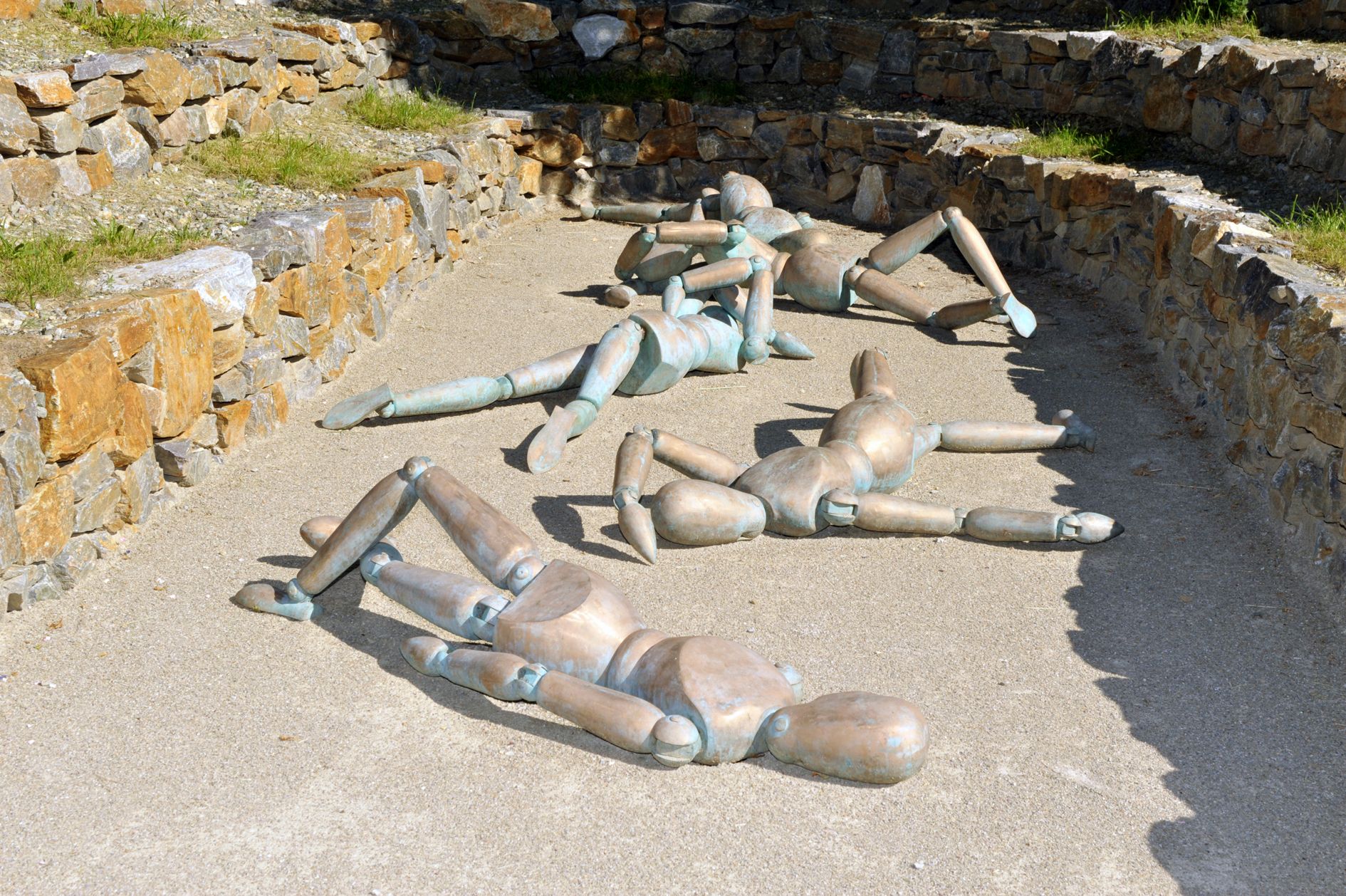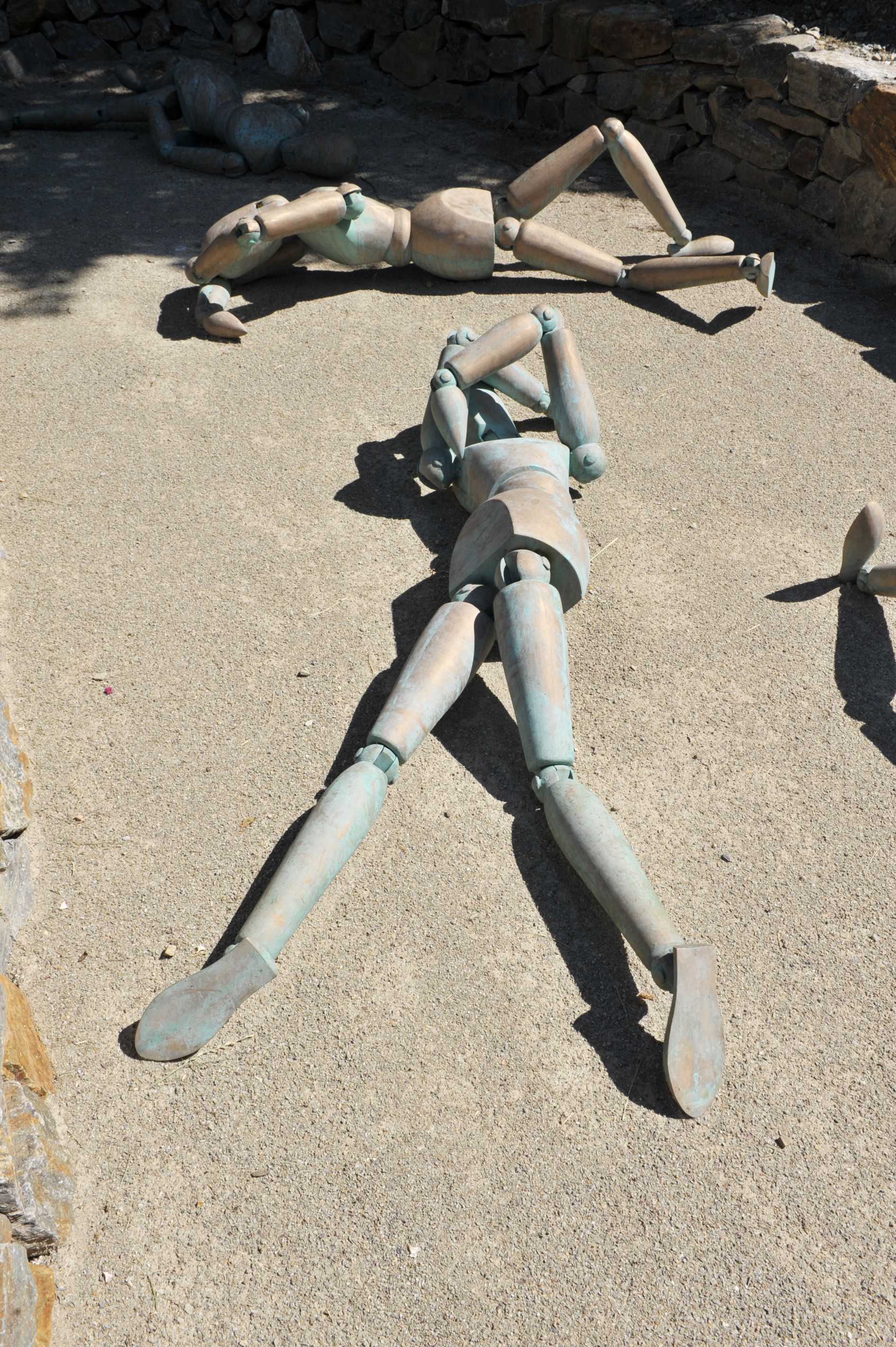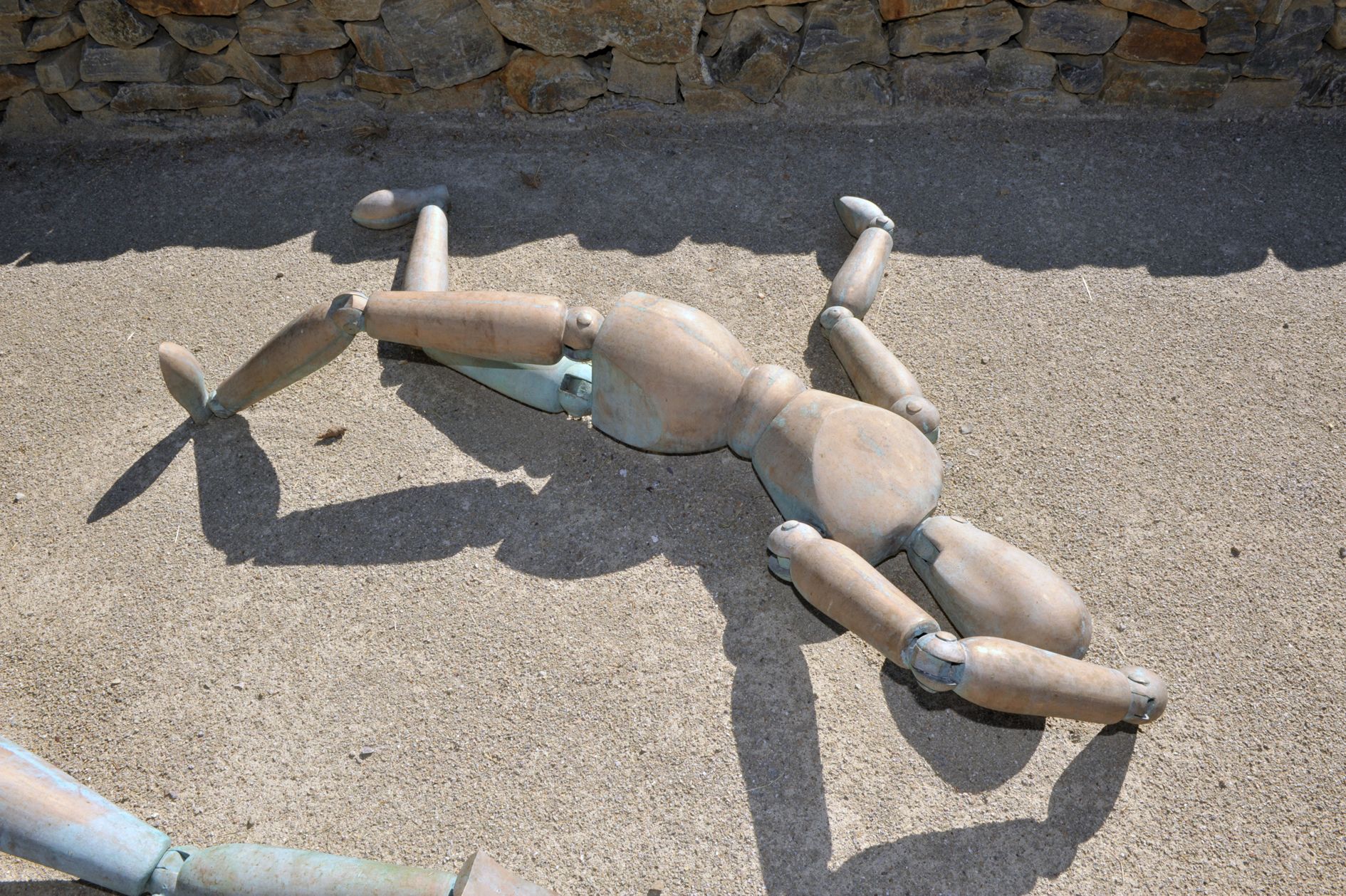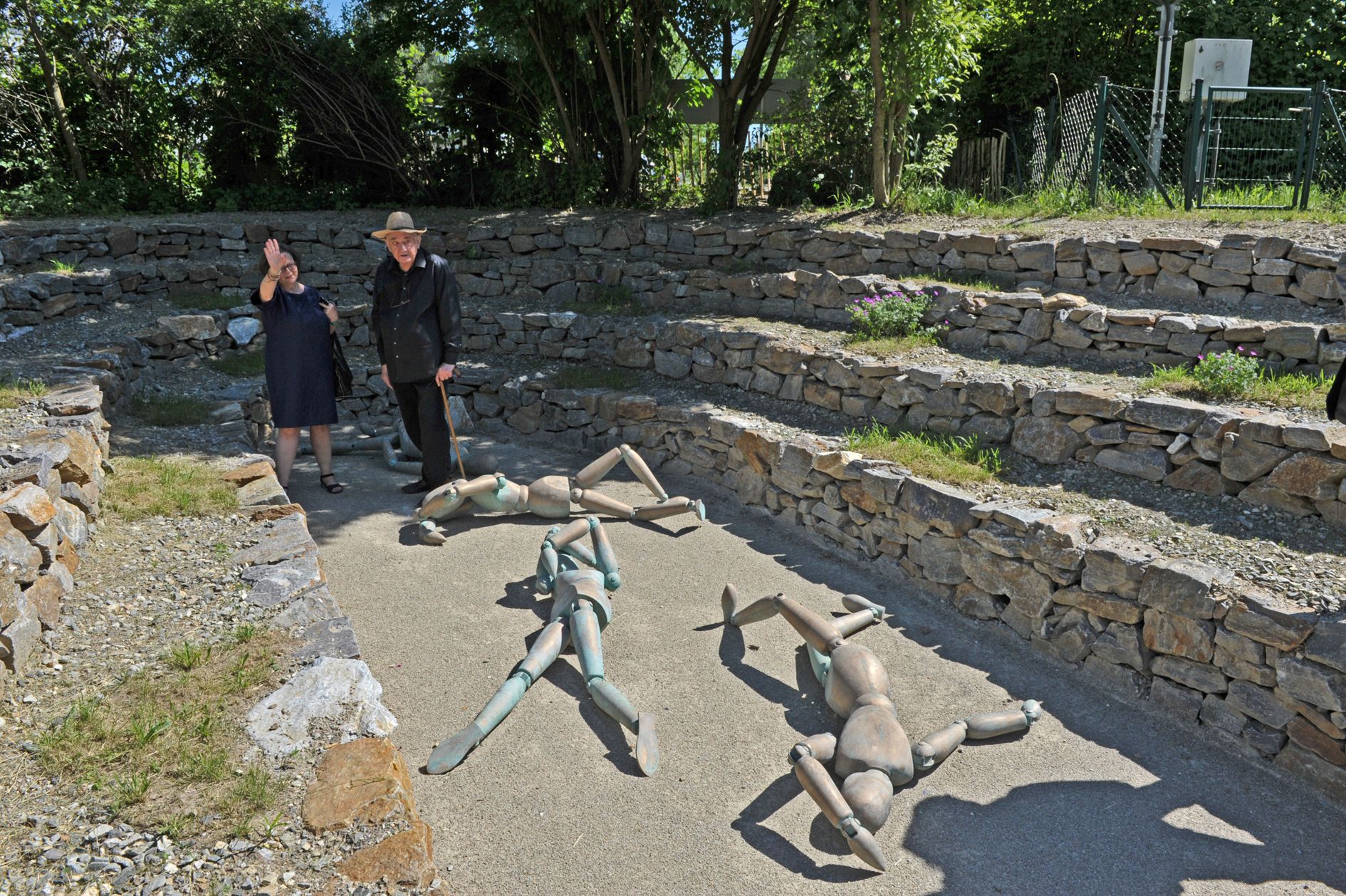Daniel Spoerri
:
Dead End
Back
Information
When Daniel Spoerri decided to establish an art foundation in Hadersdorf am Kamp, he was also confronted with the historical events that occurred in this idyllic place at the end of the war. On April 6, 1945, sixty-one prisoners who had just been released from the prison in Krems were arrested and shot or beaten to death. While a memorial plaque was installed at the cemetery in Hadersdorf, it does not acknowledge that the victims were almost all political prisoners. The names of the dead are also not mentioned, although their identity is known. This shortcoming was a thorn in the side of many citizens in the town, and they demanded a proper memorial.
First, Daniel Spoerri listened to what people had to say about the situation, then he did some research before developing fitting solution. For this, he drew on the idea behind his bronze sculpture group "Massengrab der Klone" (Mass Grave of Clones), which he had installed in the Il Giardino Park in southern Tuscany in 2000 as a reminder of the horrors of tyranny, murder, and persecution. Spoerri’s model for the figures in this sculpture was a life-sized mannequin that was cast in bronze in Italy. Because the figures, or “clones,” have no faces, they can only be distinguished through their poses – lying with their bodies turned, or their arms over their heads, as if to protect themselves. For the new memorial in Hadersdorf, Spoerri decided to produce a second version of the "Mass Grave of Clones." He created five bronze figures that were first shown at the exhibition space next to the main square then were offered to the community as a gift for the memorial site at the cemetery.
Daniel Spoerri believes that ignoring past events is not a solution, but that it is better to face the past and acknowledge what happened. "It's an image we all know: regardless of whether it’s from a concentration camp, Vietnam, Yugoslavia, or Iraq. When people destroy other people, they bury their victims like a dog would stash its chewed-on bones. I call these bodies clones because they are copies and are virtually indistinguishable. Twisted like fallen mannequins, they almost seem beautiful, despite the horrible association with a mass grave” (Daniel Spoerri).
Such events as the massacre of April 6, 1945, occurred not only in Hadersdorf, but in many places, and they continue to happen today. For this reason, the Federal State of Lower Austria and the town of Hadersdorf am Kamp decided to install this sculpture group in the State Museum in St. Pölten, soon to be the House of History in Lower Austria, as a memorial and reminder of all such crimes.
Images (5)





